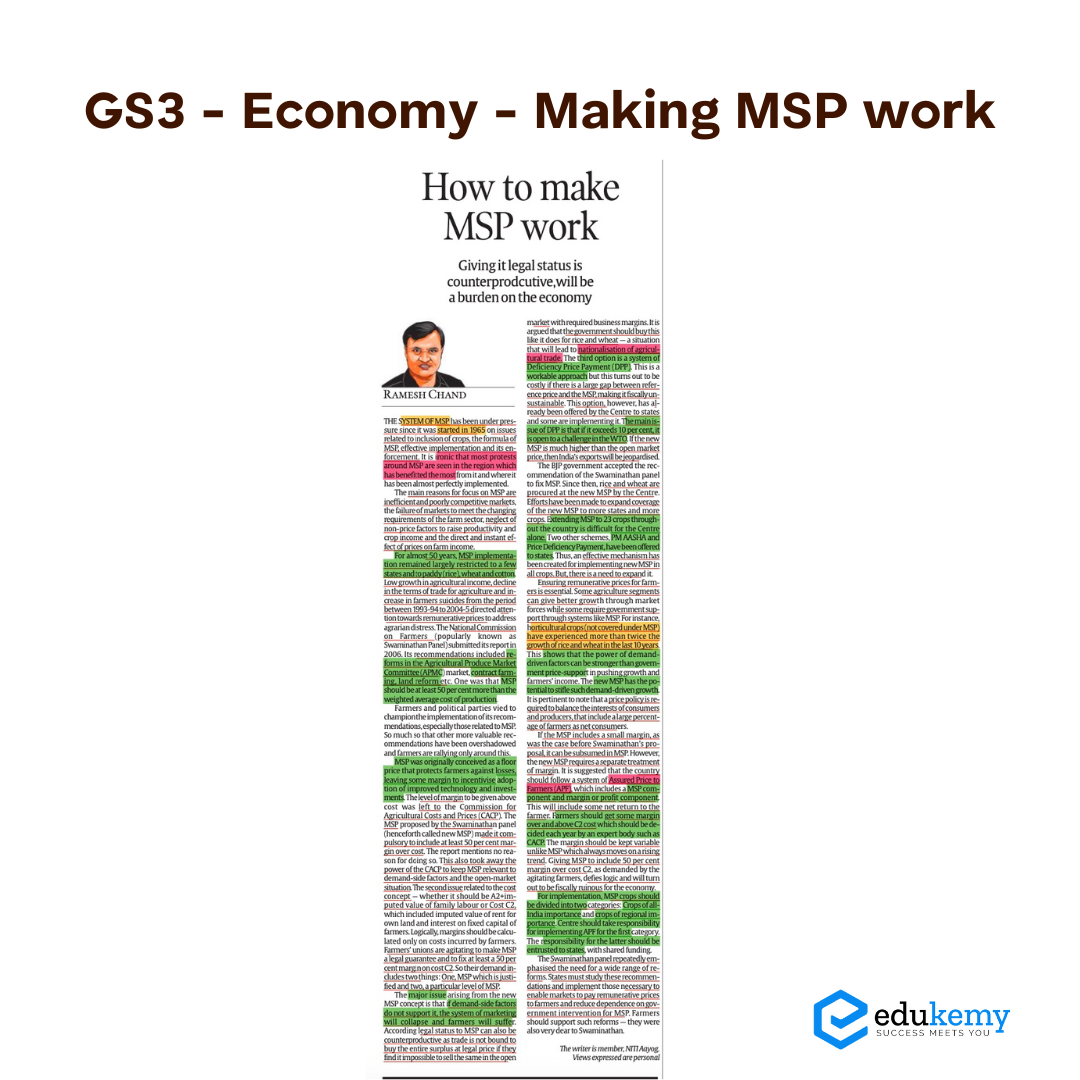Wednesday, 28th February 2024
Eased FDI Policy for Space Sector
In News: The Union Cabinet has recently given its approval for amendments to the Foreign Direct Investment (FDI) policy related to the space industry.

Recent Amendments in FDI Policy for the Space Sector
- 100% FDI Allowed
- 100% FDI permitted in the space sector to attract potential investors to Indian space companies.
- Liberalised Entry Routes
- Up to 74% under Automatic Route for Satellites-Manufacturing & Operation, Satellite Data Products, Ground Segment & User Segment.
- Beyond 74%, government route applies.
- Up to 49% under Automatic Route for Launch Vehicles, associated systems or subsystems, Creation of Spaceports.
- Beyond 49%, government route applies.
- Up to 100% under Automatic Route for Manufacturing of components and systems/sub-systems for satellites, ground segment, and user segment.
Key Features of Indian Space Policy 2023
- Transition of ISRO's Role
- ISRO to shift focus from manufacturing operational space systems to research and development in advanced technologies.
- Private Participation Encouragement
- NGEs allowed to provide national and international space-based communication services through self-owned, procured, or leased satellite systems.
- NGEs encouraged to engage in manufacturing and operating space transportation systems and commercial recovery of asteroid resources.
- NGEs entitled to possess, own, transport, use, and sell obtained resources in accordance with applicable laws.
- Industry Collaboration and Commercialisation
- IN-SPACe mandated to promote, guide, and authorize space activities autonomously.
- NSIL tasked with commercializing space technologies, manufacturing space components, and servicing space-based needs on commercial principles.
What is Foreign Direct Investment (FDI)
- About
- FDI is an investment by a foreign entity into a business or corporation in another country.
- Can be in the form of equity instruments or a controlling ownership stake.
- FDI in India
- Investment in an unlisted Indian company or 10% or more of the post-issue paid-up equity capital of a listed Indian company.
- Total FDI inflows in India in FY 22-23: USD 70.97 billion.
- Major sources: United States, Mauritius, United Kingdom, Singapore.
- Routes of FDI in India
- Automatic Route
- No approval from the Government of India required.
- Government Route
- Approval from the Government of India required.
- FDI Prohibited Sectors in India
- Gambling and Betting
- Chit Funds
- Nidhi Company
- Trading in Transferable Development Rights (TDR)
- Real Estate Business
- Manufacturing of Tobacco Products
- Sectors Not Open to Private Sector Investment: Includes atomic energy and railway operations (except for permitted activities under the Consolidated FDI policy).
- Lottery Business: Including government or private lotteries, and online lotteries.
|
UPSC Previous Year Questions Prelims (2021) Q. Consider the following:
Which of the above can be included in Foreign Direct Investments? (a) 1, 2 and 3 (b) 3 only (c) 2 and 4 (d) 1 and 4 Ans: (a) Mains (2019) Q.1 What is India’s plan to have its own space station and how will it benefit our space programme? Mains (2016) Q.2 Discuss India’s achievements in the field of Space Science and Technology. How the application of this technology helped India in its socio-economic development? |
Source: PIB
Mission Utkarsh - Initiative for Anaemia Control among adolescent girls using Ayurveda interventions
In News: The Ministry of Ayush and the Ministry of Women and Child Development have entered into a Memorandum of Understanding (MoU) to enhance the nutritional well-being of adolescent girls using Ayurveda interventions.
Anaemia: Understanding and Significance
- Definition and Impact
- According to the WHO, anaemia is characterized by a lower-than-normal count of red blood cells or reduced haemoglobin concentration.
- Vital for oxygen transportation, insufficient red blood cells or haemoglobin leads to reduced oxygen-carrying capacity, resulting in symptoms like fatigue, weakness, dizziness, and shortness of breath.
- Causative Factors
- Iron deficiency is the primary nutritional cause, while deficiencies in folate, vitamins B12, and A also contribute.
- Chronic diseases such as kidney or liver disease, cancer, autoimmune disorders, and inherited conditions like sickle cell anemia or thalassemia can interfere with red blood cell production.
- Focus on Anaemia: Reasons and Impact
- Morbidity and Mortality
- Particularly impactful on vulnerable groups, including pregnant women and children under five.
- Reproductive Health
- Prevalence studies on anaemia help monitor progress in reproductive health.
- Economic Impact
- Iron-deficiency anaemia reduces work capacity at individual and population levels.
- Morbidity and Mortality
- India's Anaemia Challenge
- Alarmingly high burden, with NFHS-5 (2019-21) revealing 57% of women (15-49 age group) and 67% of children (6-59 months) affected.
- Acknowledged by the Health Ministry as a significant public health challenge.
Mission Utkarsh: Ayurveda-Based Initiative for Anaemia Control
- Key Objectives
- Collaborative Effort
- Involves 15 central ministries or departments working collectively.
- District Elevation
- Aims to elevate underdeveloped districts to state and national averages.
- Collaborative Effort
- Pilot Launch in Aspirational Districts
- Geographical Focus
- Initially launched in five aspirational districts across five states.
- Aspirational Districts are part of a national developmental initiative targeting socio-economic improvement in underdeveloped areas.
- Geographical Focus
- Identified Districts and Target Group
- Districts
- Assam (Dhubri), Chhattisgarh (Bastar), Jharkhand (Paschimi Singhbhum), Maharashtra (Gadchiroli), and Rajasthan (Dhaulpur).
- Target Population
- Districts
- Aims for nutritional improvement among approximately 95,000 adolescent girls in anaemia-prone districts.
Source: TH
Parhyale Odian
In News: A new marine amphipod species was unearthed in Chilika Lake by researchers from Berhampur University in Odisha. The species has been named Parhyale Odian in honor of Odisha's native language, Odia.
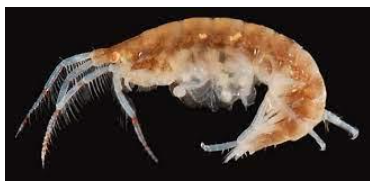
Genus Parhyale: Characteristics and Diversity
- Origins and Global Presence
- First documented in 1899 in the Virgin Islands (US).
- Currently encompasses a total of 16 species worldwide.
- Habitat and Distribution
- Inhabit both marine and brackish water environments.
- Display cosmopolitan distribution, thriving in intertidal and littoral zones across tropical and warm temperate regions.
- Ecological Niche
- Commonly found underneath stones adorned with attached vegetation.
- Also observed in the burrows of isopods, showcasing a versatile habitat preference.
Parhyale Odian: A Distinctive Member of the Genus
- Physical Characteristics
- Resembles a shrimp-like crustacean within the genus Parhyale.
- Exhibits a brown coloration and attains a length of approximately 8 millimeters.
- Leg Structure
- Possesses 13 pairs of legs, distinguishing it within the genus.
- Notably, the first pair of legs is specialized for capturing prey and feeding.
- Unique Feature
- Stands out among the 16 known species due to a robust seta—a spine-like structure—on the male gnathopod's surface (first pair of legs).
Amphipods: Integral Players in Marine Ecosystems
- Diverse Crustacean Group
- Belong to the malacostracan crustacean category, sharing characteristics with crabs, lobsters, and shrimp.
- Physical Attributes
- Exhibits a laterally compressed body, emphasizing a flattened side-to-side profile.
- Features a curved body shape, contributing to their distinctive appearance.
- Ecological Significance
- Play a vital role in marine ecosystems, contributing to the marine food chain.
- Serve as valuable indicators for studying climate change impact and assessing coastal ecosystem health.
- Recent Discoveries (2023)
- Noteworthy discoveries include Quadrivisio chilikensis and Demaorchestia alanensis in Chilika Lake, along with Talorchestia buensis on the West Bengal coast.
|
UPSC Previous Year Questions Prelims (2014) Q. Which one of the following is the correct sequence of a food chain? (a) Diatoms-Crustaceans-Herrings (b) Crustaceans-Diatoms-Herrings (c) Diatoms-Herrings-Crustaceans (d) Crustaceans-Herrings-Diatoms Ans: (a) |
Source: DTE
Raisina Dialogue 2024
In News: The 9th edition of the Raisina Dialogue recently occurred in New Delhi, witnessing the physical presence of more than 2,500 participants from around 115 countries.
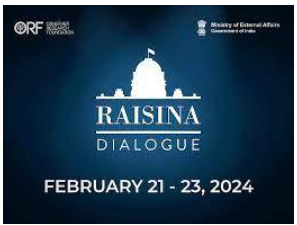
Introduction to Raisina Dialogue
- The Raisina Dialogue is an annual conference focusing on geopolitics and geoeconomics, organized by the Observer Research Foundation (ORF) in partnership with the Ministry of External Affairs.
- It serves as a platform for multi-stakeholder discussions involving leaders from politics, business, media, and civil society.
2024 Theme and Thematic Pillars
- Tech Frontiers: Regulations & Realities
- Exploration of evolving regulations and realities in technological advancements.
- Discussions on cybersecurity, digital transformation, and artificial intelligence.
- Peace with the Planet: Invest & Innovate
- Focus on investing and innovating for global peace and sustainable development.
- Deliberations on the role of nations in addressing environmental challenges.
- War & Peace: Armouries & Asymmetries
- Analysis of global conflicts, with attention to military strategies and asymmetrical warfare.
- Discussions on handling challenges posed by an assertive China.
- Decolonising Multilateralism: Institutions & Inclusion
- Exploration of inclusive approaches to multilateralism.
- Discussions on reforms and inclusivity in global institutions.
- The Post 2030 Agenda: People & Progress
- Consideration of the post-2030 global agenda, focusing on societal progress.
- Discussions on international cooperation for achieving developmental goals.
- Defending Democracy: Society & Sovereignty
- Examination of challenges and strategies for defending democracy.
- Deliberations on the intersection of society and national sovereignty.
Key Takeaways of Raisina Dialogue 2024
- Geopolitical Shifts
- Discussions on evolving power dynamics among major players.
- Adaptation of strategies and alliances in response to new challenges.
- India as a Bridging Power
- Emphasis on India's role as a "bridging power" with a "multi-vector" policy.
- India's diplomatic outreach and efforts to foster global friendships.
- India-Middle East-Europe Economic Corridor
- Highlighting the significance of connectivity projects, including the India-Middle East-Europe Economic Corridor.
- Exploration of economic ties and trade agreements with Central and Eastern Europe.
- Baltic-Nordic Forum
- Diplomatic outreach to Central and Eastern Europe through the Baltic-Nordic forum.
- Initiatives aimed at establishing trade agreements and investment ties.
- Global Conflicts
- Focus on the Russian war in Ukraine and European perspectives.
- Discussions on handling an assertive China and "grey warfare."
- Regional Security Concerns
- Addressing tensions in regions like the Indo-Pacific, Middle East, and Eastern Europe.
- Strategies for conflict resolution, peace-building, and managing regional rivalries.
- Technology and Innovation
- Recognition of the role of technology and innovation in shaping geopolitics.
- Discussions on cybersecurity, digital transformation, and the implications for international relations.
|
UPSC Previous Year Questions Prelims (2020) Q. Consider the following pairs: International agreement/set-up : Subject 1. Alma-Ata Declaration : Healthcare of the people 2. Hague Convention : Biological and chemical weapons 3. Talanoa Dialogue : Global climate change 4. Under2 Coalition : Child rights Which of the pairs given above is/are correctly matched? (a) 1 and 2 only (b) 4 only (c) 1 and 3 only (d) 2, 3 and 4 only Ans: (c) |
Source: ET
Flue Cured Tobacco
In News: The Indian government has authorized the sale of FCV (Flue-Cured Virginia) Tobacco through the Tobacco Boards auction platform.
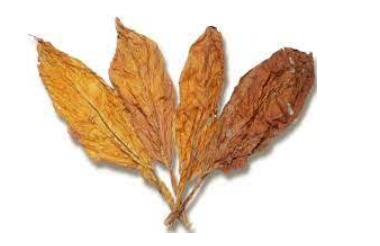
Flue-Cured Tobacco: Processing and Characteristics
- Curing Process: Market Readiness
- Curing is the essential process preparing harvested tobacco leaves for the market.
- Particularly well-standardized in Flue-Cured Virginia (FCV) tobacco, aiming to achieve desired qualities in the cured leaf while eliminating moisture.
- Traditional Curing Methods
- Three primary methods employed: Air-Cured, Fire-Cured, and Flue-Cured.
- Each method imparts distinct characteristics to the tobacco, influencing both nicotine content and aroma.
- Purpose of Curing
- Necessary for creating smoking tobacco as the initial wet, green tobacco leaves contain excessive moisture, making them non-flammable.
- Facilitates the reduction of chlorophyll content during drying, allowing natural tannins to emerge, contributing to the flavor and scent of smoked tobacco.
- Key Characteristics of Flue-Cured Tobacco
- Primarily used for cigarette production.
- High sugar content and medium to high nicotine levels.
- Distinct mild and slightly sweet flavor and aroma due to rich natural tannins.
- Geographical Production in India
- Flue-Cured Virginia (FCV) Tobacco is predominantly cultivated in two states in India: Andhra Pradesh and Karnataka.
Source: PIB
INDRA RV25: 240N
In News: Raghu Vamsi Machine Tools Private Limited, headquartered in Hyderabad, has recently introduced its entirely self-developed Micro Turbojet Engine named "INDRA RV25: 240N."

About INDRA RV25: 240N
- Micro Turbojet Engine
- INDRA RV25: 240N is a domestically designed and developed micro turbojet engine.
- It is the result of collaborative efforts between Hyderabad-based firm Raghu Vamsi Machine Tools and support from IIT Hyderabad.
- Applications
- Primarily intended for unmanned aerial vehicles (UAVs) or drones.
- Finds applications in UAVs, air taxis, jetpacks, auxiliary power units, range extenders, and future power generation.
- Turbojet Engine Overview
- Turbojet engines generate thrust by expelling a high-energy gas stream from the engine exhaust nozzle.
- In contrast to turbofan engines, 100% of the air entering the intake goes through the engine core.
- Components
- Consists of the inlet, gas turbine engine with a compressor, combustion chamber, and turbine, and the exhaust nozzle.
- Working Principle
- Air is drawn into the engine through the inlet, compressed, and heated by the compressor.
- Fuel is added to the combustion chamber, igniting and adding energy to the exhaust stream.
- Turbine extracts energy to drive the compressor, and the remaining exhaust energy produces thrust.
- Thrust Generation
- The geometry of the exhaust nozzle enhances the thrust production process.
- As the exhaust gas passes through the nozzle, it expands, accelerating to high speed and providing propulsion.
- Afterburner/Re-heat
- The engine's thrust can be selectively increased by incorporating an afterburner or re-heat into the design.
- Turbojet Aircraft Efficiency
- Turbojet aircraft accelerate a relatively small mass of air to high speed.
- Optimal efficiency occurs at speeds approximating Mach 2, making turbojets more suitable for high-speed aircraft.
- Limitations at Lower Speeds
- Turbojets have lower propulsive efficiency at lower airspeeds.
- Peak efficiency is achieved when speeds approach Mach 2, restricting their effectiveness for high-speed applications.
Source: FF
Know Your Customer
In News: An expert committee, led by Finance Secretary T V Somanathan, has been constituted by the Government of India to provide recommendations for the establishment of standardized Know Your Customer (KYC) norms.
About Know Your Customer (KYC)
- Comprehensive Verification Process
- Financial and non-financial institutions adopt the KYC process to authenticate and verify the identity of their customers.
- Mandatory for Financial Transactions
- Mandatory for customers before engaging in any financial transactions, such as investing in instruments or opening a bank account.
- Diverse KYC Requirements in India
- Different KYCs are required for various financial products in India, including bank account opening, mutual fund investments, life cover purchase, and retirement-savings funds.
- Challenges for New Investors
- Multiple KYCs, regular updates, and specific requirements can be deterrents for new investors.
- Central KYC Records Registry (CKYCR)
- Launched by the central government of India in 2016.
- Initially limited to the capital markets.
- Applicability in Securities Markets
- In the securities markets, once KYC is completed through a Sebi-registered intermediary, such as a broker, depository participant, or mutual fund, customers are exempted from undergoing the same process for new investments.
- CERSAI's Role
- The Central Registry of Securitisation Asset Reconstruction and Security Interest of India (CERSAI) was authorized by the government to perform CKYCR functions.
- Centralized Storage of KYC Records
- CKYCR receives, stores, safeguards, and retrieves KYC records digitally in a secure electronic format.
- One-time Submission of KYC Details
- Customers submit KYC details only once with any reporting entity of RBI, Sebi, IRDAI, or PFRDA during account opening.
- KYC Identification Number (KIN)
- Upon registration, customers receive a 14-digit KYC Identification Number (KIN).
- KIN can be used across any financial institution registered with CERSAI.
- Access for Financial Institutions
- Financial institutions access the CKYCR database to retrieve customer KYC records during onboarding.
- Centralized KYC (CKYC) Update
- In case of customer details changes, reporting entities initiate a centralised KYC (CKYC) update, incorporating the latest KYC record.
Source: BS
Garbhini-GA2
In News: Recently, researchers introduced Garbhini-GA2, an artificial intelligence model specifically designed for India, aiming to accurately determine the gestational age of a foetus.

About Garbhini-GA2
- India-Specific AI Model
- Garbhini-GA2 is the pioneering India-specific artificial intelligence (AI) model.
- It accurately determines the age of a foetus during the second and third trimesters of pregnancy.
- Development by Research Institutions
- Developed by researchers from the Indian Institute of Technology Madras and the Translational Health Science and Technology Institute (THSTI), Faridabad.
- Part of GARBH-Ini Programme
- Integral to the Department of Biotechnology (DBT) India initiative - the GARBH-Ini programme.
- Part of an interdisciplinary group focusing on advanced research on birth outcomes.
- Late-Trimester GA Estimation
- Garbhini-GA2 marks the first late-trimester Gestational Age (GA) estimation model.
- Developed and validated using Indian population data.
- Enhanced Accuracy
- Demonstrates a significant reduction in errors, achieving nearly three times greater accuracy in foetal age estimation.
- Critical for Maternal Care
- Accurate Gestational Age (GA) determination is crucial for appropriate care of pregnant women.
- Aids in determining precise delivery dates for better maternal and infant healthcare outcomes.
- Validation and Deployment
- Once validated in pan-India cohorts, Garbhini-GA2 holds the potential for widespread deployment in clinics.
- Aims to contribute to improved maternal healthcare and reduced mortality rates across the country.
Source: ET
Mauritius
In News: Over 3,000 individuals are marooned in Mauritius waters as the nation denied entry to a Norwegian Cruise Line Holdings ship, citing health concerns.
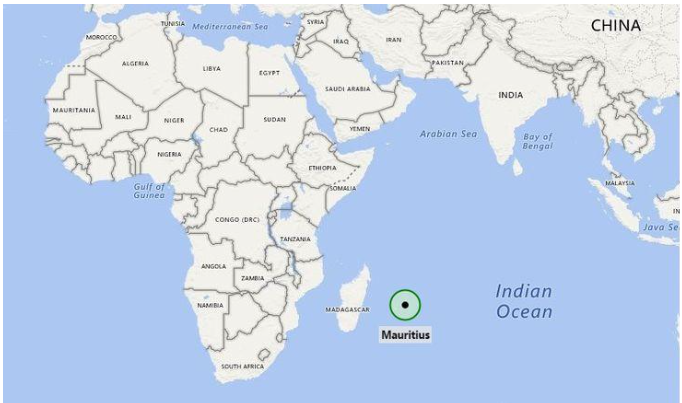
About Mauritius
- Geographical Location
- An island country situated in the Indian Ocean, off the eastern coast of Africa.
- Approximately 500 miles (800 km) east of Madagascar.
- Land Features
- Outlying territories include Rodrigues Island, Cargados Carajos Shoals, and the Agalega Islands.
- Claims sovereignty over the Chagos Archipelago, including Diego Garcia, disputed by Britain.
- Relief and Origin
- Volcanic in origin with coral reefs surrounding.
- Northern part forms a plain rising to a central plateau, bordered by small mountains suggesting an ancient volcano rim.
- Climate
- Maritime subtropical climate with uniform temperatures year-round.
- Capital
- Port Louis.
- Languages
- English, French, Mauritian Creole, Bhojpuri, Hindi, Chinese, Marathi.
- Government
- Gained independence in 1968, functioning as a Parliamentary Republic.
- Stable democracy with regular free elections.
- President as the chief of state and the prime minister as the head of government.
- Member of COMESA and SADC.
- Population
- About two-thirds of Indo-Pakistani origin, descendants of 19th and early 20th-century indentured laborers in the sugar industry.
- One-fourth Creole population of mixed French and African descent.
- Smaller populations of Chinese and Franco-Mauritian descent.
- Religion
- Approximately half of the population practices Hinduism.
- About one-third follows Christianity.
Source: News18
Large Language Models - Edukemy Current Affairs
In News: Generative AI models' capability to engage in "conversations" with humans is attributed to a component called the Large Language Model, abbreviated as LLM.
About Large Language Models (LLMs)
- Definition
- Large Language Models (LLMs) are a type of artificial intelligence (AI) program designed for tasks such as text recognition and generation.
- Training Data Size
- LLMs are labeled "large" because they are trained on extensive datasets, often sourced from the Internet, comprising thousands or millions of gigabytes of text.
- Neural Network Basis
- Built on the architecture of transformer models, a type of neural network, as part of machine learning.
- Learning Human Language
- LLMs learn to recognize and interpret human language or other complex data by analyzing numerous examples.
- Data Quality Impact
- The quality of training samples significantly affects the LLM's proficiency in understanding natural language, prompting the use of curated datasets by programmers.
- Deep Learning Mechanism
- Utilizes deep learning, a form of machine learning that involves probabilistic analysis of unstructured data.
- Tuning Process
- Further training through tuning involves fine-tuning or prompt-tuning, aligning LLMs to specific tasks like interpreting questions or generating responses.
Applications of LLMs
- Generative AI
- LLMs are widely used for generative AI applications.
- Example: ChatGPT, a publicly available LLM, can generate essays, poems, and various textual forms in response to user prompts.
- Text Recognition and Generation
- LLMs excel in tasks involving the recognition and generation of textual content.
- Interpreting and Translating
- LLMs can be trained for tasks like interpreting questions and translating text from one language to another.
- Diverse Tasks
- LLMs can be adapted for a multitude of tasks, demonstrating versatility in their applications within the AI landscape.
Source: IE
Revitalizing Land Management for Sustainable Progress
In News: A recent article underscores the imperative for immediate intervention in an area of public policy and human well-being that has been neglected in the past: addressing the long-term sustainability of land, soil, and water resources.
Current Status of Land Degradation: Global Overview
Global Disparities in Land Degradation
- Sub-Saharan Africa, Western and Southern Asia, Latin America, and the Caribbean experience land degradation rates exceeding the global average.
- Eastern and Central Asia, Latin America, and the Caribbean face severe degradation affecting at least 20% of their total land area.
Trends in Land Degradation (2015-2019)
- Sub-Saharan Africa's degraded land increased from 6.7% to 14.63%.
- Western Asia and Northern Africa witnessed an increase from 3.78% to 7.18%.
India's Land Degradation (2015-2019)
- India reported 30.51 million hectares of degraded land, reaching 9.45% of the country's landmass in 2019.
- 251.71 million Indians (18.39% of the population) were exposed to land degradation.
Causes of Land Degradation
- Human-Induced Soil Degradation Identified by GLASOD
- Soil Erosion and Nutrient Depletion
- Deforestation
- Overgrazing by Livestock
- Traditional Farming Practices
- Loss of Vegetative Cover
- Population Growth
- Impact of Climate Change
Challenges in Land Degradation Management in India
- Acute Disparity Between Land Area and Population
- Competition Between Agriculture and Other Sectors
- Adverse Effects of Climate Change
- Sectoral Approach to Land Management
- Inadequate Land Management Practices
Suggestions for Effective Land Degradation Management
- Setting Up Multi-Stakeholder Platforms
- Engaging farmers, policymakers, civil society, and investors.
- Utilizing district planning committees for comprehensive land management plans.
- Adopting the Climate-Smart Landscape Approach
- Assessing land potential and reallocating for appropriate uses.
- Contributing to climate objectives, increased agricultural production, and biodiversity conservation.
- Promoting Integrated Landscape Management
- Recognizing land as a system and fostering integrated approaches.
- Institutional support for sustainable land management.
- Involvement of Different Actors
- Parliamentarians initiating discussions on integrated land management challenges.
- Inclusive policymaking for long-term sustainability.
- Country Level Stock-Taking
- Implementing the IPCC's recommendation for country-level assessments.
- Prioritizing land management options with co-benefits and minimal negative impacts.
- FAO's Urgent Call
- Acknowledging the urgency in caring for the long-term future of land, soil, and water.
- Recognizing the critical role of public policy and human welfare in land conservation.
Conclusion
- Land serves as a cornerstone for diverse human activities, offering ecological, economic, social, and cultural services. Unfortunately, its multi-faceted importance is frequently disregarded, resulting in heightened stress, degradation, and environmental depletion.
- In the context of India, grappling with a constrained geographical expanse and a substantial agricultural-dependent population, the task of sustainable land management presents formidable challenges. To surmount these challenges, the establishment of a multi-stakeholder platform at district and sub-district levels, coupled with a landscape-oriented approach, proves pivotal. These strategies can effectively harmonize sectoral interests and secure the enduring sustainability of vital land resources.
|
UPSC Previous Year Questions Prelims (2016) Q. What is/are the importance/importances of the ‘United Nations Convention to Combat Desertification'?
Select the correct answer using the code given below: (a) 1 only (b) 2 and 3 only (c) 1 and 3 only (d) 1, 2 and 3 Ans: (c) Mains (2020) Q. The process of desertification does not have climate boundaries. Justify with examples. Mains (2016) Q. In what way micro-watershed development projects help in water conservation in drought-prone and semi-arid regions of India? |
Source: TH
Share the article
Edukemy’s Current Affairs Quiz is published with multiple choice questions for UPSC exams
MCQ
Get Latest Updates on Offers, Event dates, and free Mentorship sessions.

Get in touch with our Expert Academic Counsellors 👋
FAQs
UPSC Daily Current Affairs focuses on learning current events on a daily basis. An aspirant needs to study regular and updated information about current events, news, and relevant topics that are important for UPSC aspirants. It covers national and international affairs, government policies, socio-economic issues, science and technology advancements, and more.
UPSC Daily Current Affairs provides aspirants with a concise and comprehensive overview of the latest happenings and developments across various fields. It helps aspirants stay updated with current affairs and provides them with valuable insights and analysis, which are essential for answering questions in the UPSC examinations. It enhances their knowledge, analytical skills, and ability to connect current affairs with the UPSC syllabus.
UPSC Daily Current Affairs covers a wide range of topics, including politics, economics, science and technology, environment, social issues, governance, international relations, and more. It offers news summaries, in-depth analyses, editorials, opinion pieces, and relevant study materials. It also provides practice questions and quizzes to help aspirants test their understanding of current affairs.
Edukemy's UPSC Daily Current Affairs can be accessed through:
- UPSC Daily Current Affairs can be accessed through Current Affairs tab at the top of the Main Page of Edukemy.
- Edukemy Mobile app: The Daily Current Affairs can also be access through Edukemy Mobile App.
- Social media: Follow Edukemy’s official social media accounts or pages that provide UPSC Daily Current Affairs updates, including Facebook, Twitter, or Telegram channels.



